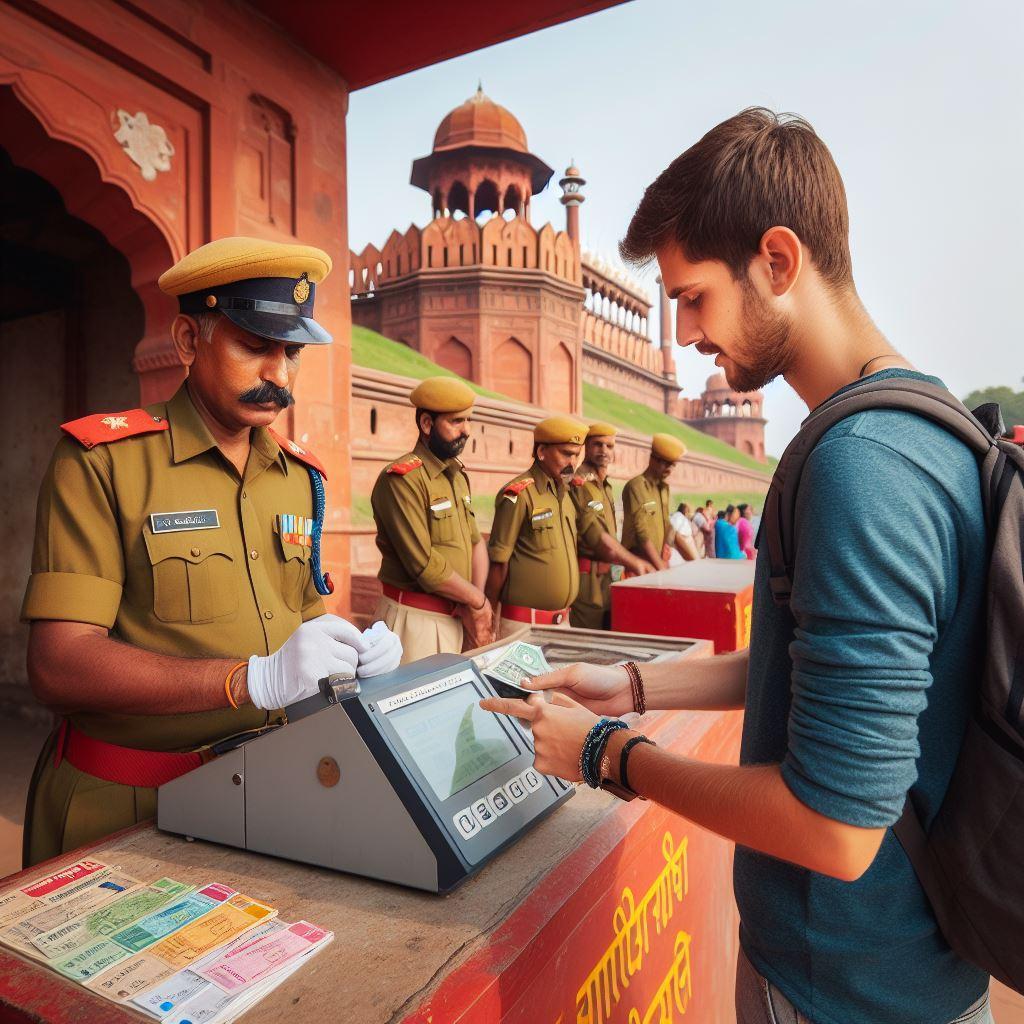India’s rich history, vibrant culture, and stunning landscapes make it a must-visit destination. From the majestic Taj Mahal to the serene backwaters of Kerala, the country offers countless attractions. However, some government-managed sites charge specific entry fees for foreign visitors. This guide breaks down what you need to know about tourist fees, how to avoid scams, and tips to make your trip smoother and more enjoyable.
What Are Tourist Fees?
Government-Managed Sites
Historical monuments, museums, national parks, and wildlife sanctuaries managed by India’s Central or State governments often have different entry fees for foreign nationals compared to Indian citizens. Examples include iconic sites like the Taj Mahal, Qutub Minar, Red Fort, and wildlife reserves like Ranthambore National Park or Jim Corbett National Park.
- Monuments: Entry fees for foreigners typically range from ₹500 to ₹1,100 ($6–$13 USD) at major sites like the Taj Mahal or Humayun’s Tomb. Smaller monuments may charge ₹100–₹300 ($1–$4 USD).
- National Parks and Wildlife Sanctuaries: Fees vary depending on the park, with additional costs for safaris, guides, or camera permits. For example, a jeep safari in Ranthambore can cost ₹1,500–₹3,000 ($18–$36 USD) for foreigners, including entry fees.
- Museums: Government-run museums, like the National Museum in Delhi, often charge ₹650 ($8 USD) for foreign visitors, compared to ₹50 ($0.60 USD) for Indian citizens.
Why the Difference?
The tiered pricing system helps subsidize lower entry costs for Indian citizens, making cultural and natural treasures more accessible to locals. For foreign travelers, these fees are still reasonable compared to similar attractions worldwide and contribute to the maintenance of these sites.
Additional Fee Insights
- Camera Fees: Many monuments and parks charge extra for photography or videography, especially for professional equipment. For example, the Taj Mahal charges ₹200 ($2.50 USD) for video cameras.
- Group Discounts: Some sites offer discounts for student groups or large tourist groups, so check with the ticket counter or your tour operator.
- Online Booking: Major sites like the Taj Mahal and Ajanta Caves allow online ticket purchases through the Archaeological Survey of India (ASI) website or apps like Yatra. This can save time and sometimes includes a small discount.
🚨 Beware of Scams 🚨
Government vs. Private Sites
Tourist fees apply only to government-managed sites. Privately run establishments, such as restaurants, shops, or amusement parks, should not charge based on nationality. If a private venue tries to impose a “tourist surcharge,” politely question it or walk away.
Common Scams to Watch For
- Fake Ticket Sellers: Scammers may pose as “official” ticket vendors near popular sites, selling overpriced or fake tickets. Always buy tickets from designated counters or official websites.
- Unofficial Guides: At monuments, unofficial guides may demand high fees or claim you need a guide to enter. Licensed guides are optional and have fixed rates (e.g., ₹1,000–₹2,000 for a 2-hour tour at major sites).
- Overcharging at Smaller Sites: At lesser-known attractions, staff may quote inflated prices for foreigners. Always check for displayed fee boards or ask for a receipt.
Transparency Tips
- Check Fee Boards: Legitimate sites display entry fees clearly at ticket counters. If you don’t see one, ask officials for clarification.
- Official Websites: Use resources like the ASI website (asi.nic.in) or state tourism websites for accurate fee information.
- Ask Politely: If you’re unsure about a fee, ask ticket staff or on-site officials for details. Most are happy to clarify.
ITT Pro Tips
- Carry Indian Rupees (INR): Many ticket counters, especially at smaller sites, don’t accept cards or foreign currency. Keep small denominations (₹50, ₹100) for convenience.
- Research Fees in Advance: Check entry fees for your planned destinations to budget accurately. Websites like Incredible India (incredibleindia.org) or state tourism portals provide updated fee details.
- Book Tickets Online: For popular sites like the Taj Mahal, Qutub Minar, or wildlife safaris, book tickets online to skip long queues and secure your spot, especially during peak seasons (October–March).
- Combine Visits: Many cities offer multi-site tickets. For example, in Delhi, a single ASI ticket can cover multiple monuments like Humayun’s Tomb and Safdarjung Tomb, saving you money.
- Travel Off-Season: Visiting during the monsoon season (June–September) can mean fewer crowds and sometimes lower safari or park fees, though check for closures due to weather.
- Carry ID: Some sites offer student or senior discounts for foreigners, so carry a valid ID or student card.
- Plan for Extra Costs: Budget for additional expenses like parking, audio guides (₹100–₹200), or transport within large sites like Khajuraho or Hampi.
Why It’s Worth It
Tourist fees at government-managed sites are a small price to pay for experiencing India’s incredible heritage. Your contributions help preserve ancient monuments, protect endangered wildlife, and maintain world-class museums. By understanding the fee system, planning ahead, and staying vigilant against scams, you’ll enjoy a hassle-free and enriching journey through India’s cultural and natural wonders.
Bonus Tip: Local Insights
- Free Entry Days: Some sites, like certain museums, offer free entry on specific days (e.g., International Museum Day, May 18). Check local schedules.
- Cultural Events: Many heritage sites host festivals or light-and-sound shows (e.g., at Red Fort or Khajuraho), which may have separate tickets but are worth experiencing for a deeper cultural dive.
- Local Food Nearby: After visiting monuments, explore nearby street food or local eateries. For example, try parathas near Qutub Minar or chaat in Old Delhi for an authentic taste of India.
Plan smart, stay curious, and let India’s wonders captivate you!
Categories :


